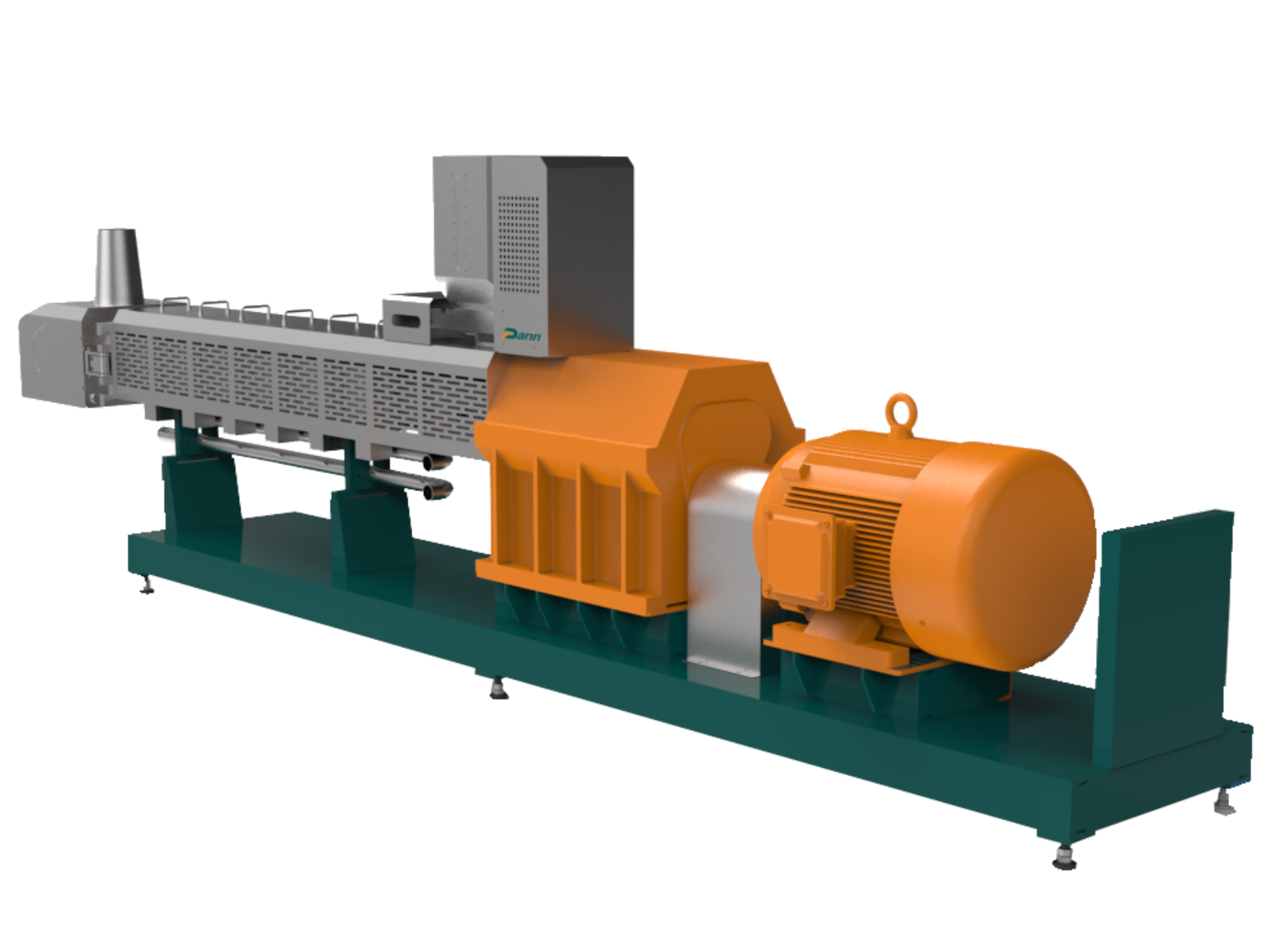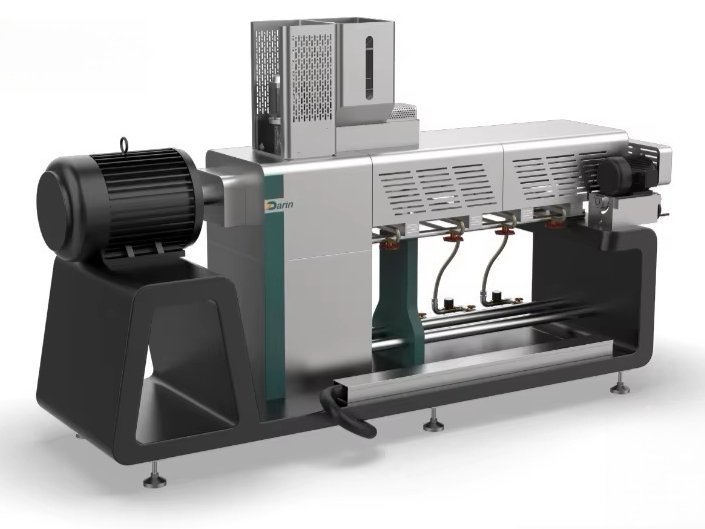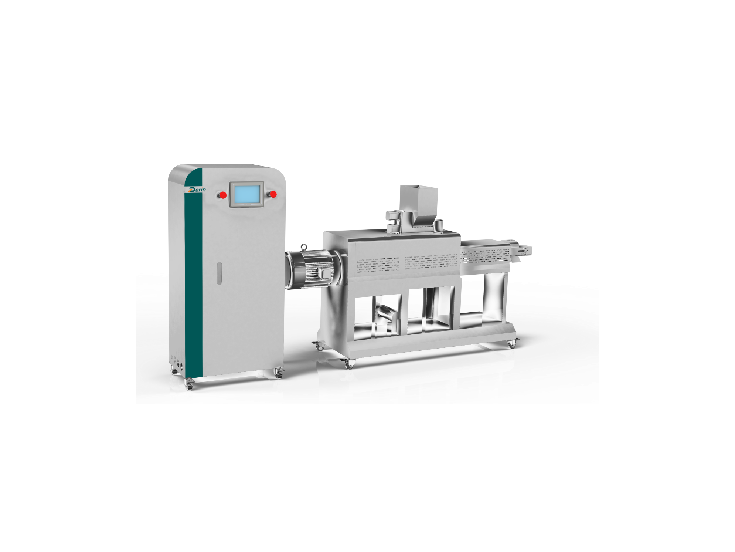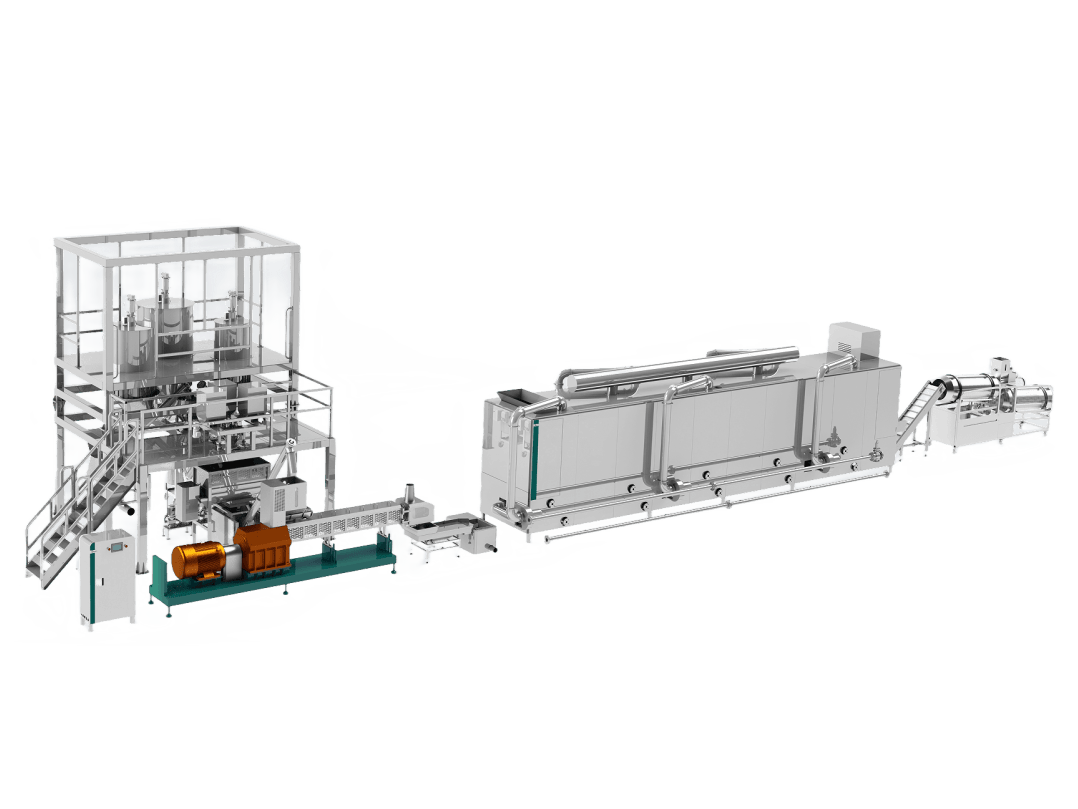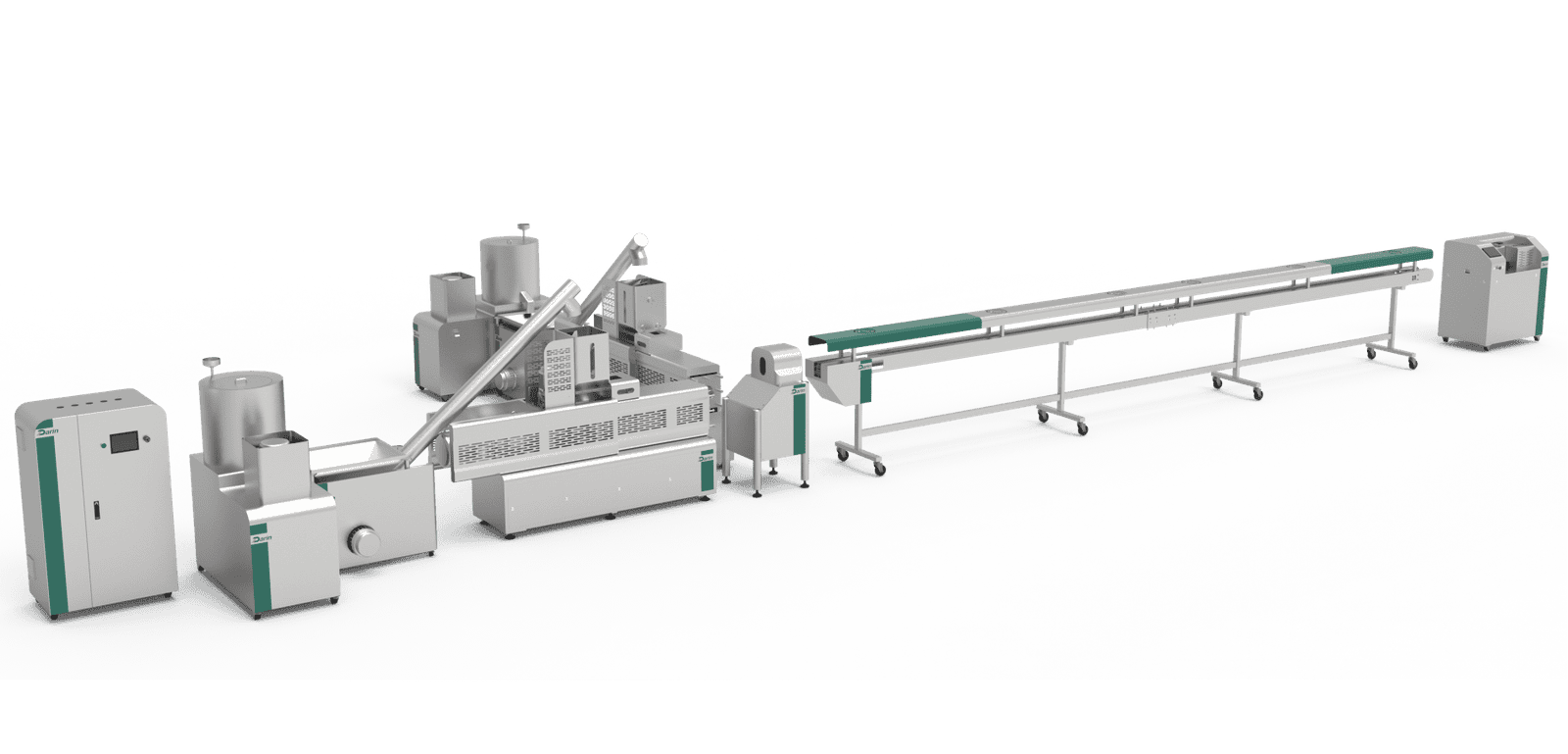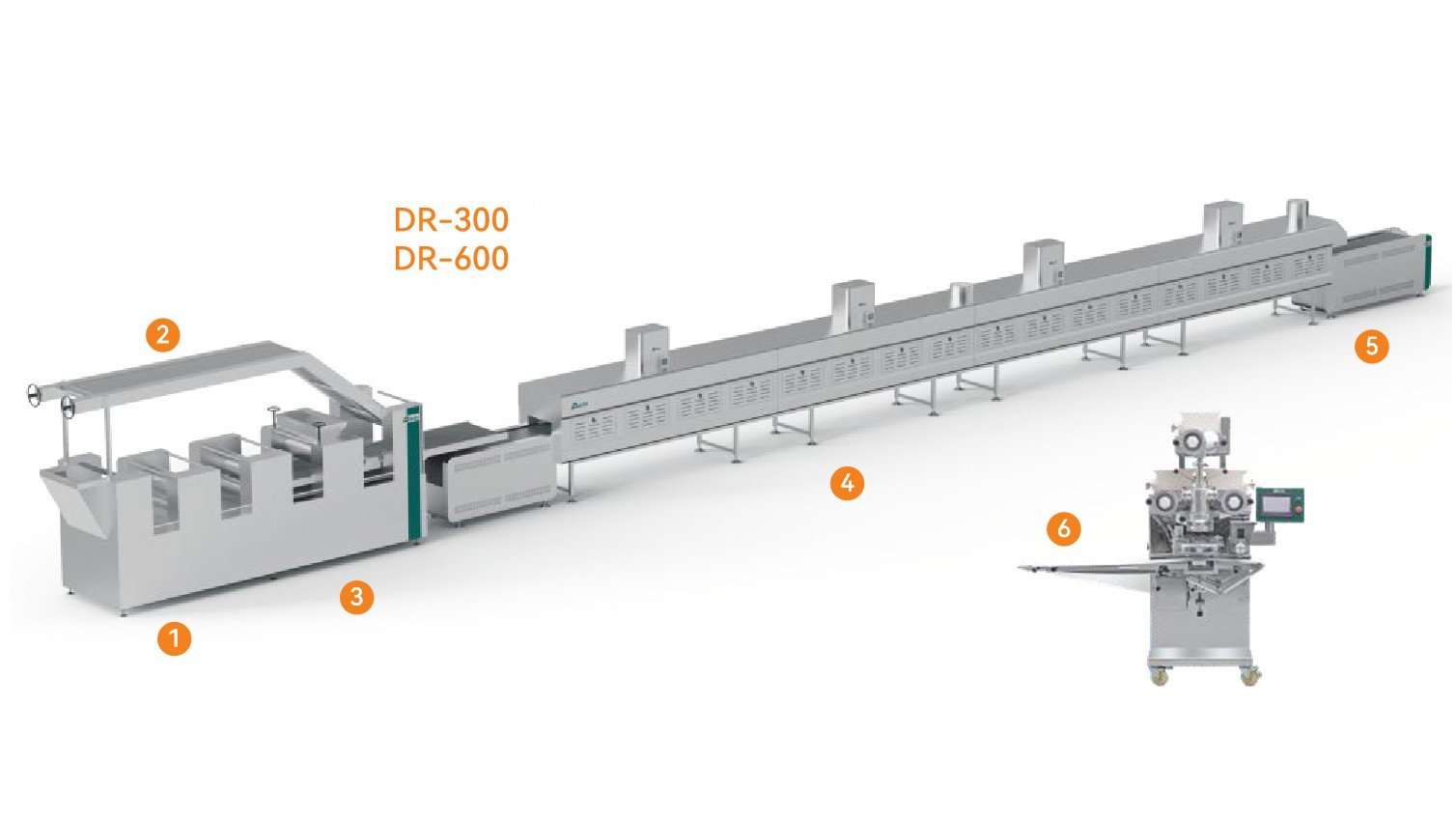
Dog biscuits are one of the most popular and profitable segments in the pet snack industry, yet many pet food manufacturers struggle to ensure consistent quality, appealing texture, and efficient output in large-scale production. Problems such as uneven baking, unstable formulations, or poor mold precision can lead to high waste rates and dissatisfied customers. The solution lies in understanding the complete dog biscuit production process — from ingredient formulation to packaging — and applying automated machinery to guarantee stable, high-yield production. This article explores every key step and provides a professional guide for building or upgrading a modern dog biscuit production line.
Dog biscuit production involves blending carefully formulated ingredients, shaping the dough through a biscuit forming machine, baking under controlled conditions, and cooling and packaging for preservation. Modern production lines use automatic mixing, conveying, and baking systems to achieve consistent quality, hygiene, and productivity.
Dog biscuit manufacturing is not just about baking pet treats; it is a precise engineering process involving food extrusion, temperature control, dough rheology, and packaging automation. Keep reading to understand how Darin Machinery — a professional manufacturer of pet food and snack equipment — helps producers worldwide achieve reliable and efficient dog biscuit production.
Dog biscuit production requires extrusion technology.False
Dog biscuits are typically made through dough mixing, forming, baking, and cooling processes rather than extrusion, which is more common for kibble and chews.
Step-by-Step Guide to Dog Biscuit Production
Step 1. Ingredient Preparation and Formulation
Dog biscuits are made using a balanced combination of wheat flour, corn flour, meat meal, fat, vitamins, and minerals. The exact formulation depends on the targeted nutritional value and texture — for example, crunchy biscuits for dental care or soft biscuits for puppies.
| Common Ingredient | Function | Typical Inclusion Rate (%) |
|---|---|---|
| Wheat flour | Provides structure and crisp texture | 40–60 |
| Corn meal | Adds flavor and energy | 10–20 |
| Meat powder | Protein source | 5–15 |
| Animal fat | Palatability and binding | 3–8 |
| Minerals and vitamins | Nutritional enrichment | 0.5–2 |
| Water | Dough hydration | Adjust to texture |
Automated weighing and mixing systems ensure uniform dispersion of ingredients. This improves batch consistency and reduces manual labor.
Step 2. Dough Mixing
The mixing process converts dry ingredients and water into a homogeneous dough with ideal elasticity. Industrial horizontal mixers or double-shaft paddle mixers are commonly used. The dough temperature must be controlled between 20–25°C to prevent gluten degradation.
High-speed mixing improves dough elasticity for dog biscuits.True
Proper high-speed mixing helps develop gluten and achieve uniform dough, which improves biscuit forming and texture consistency.
Step 3. Forming and Cutting
After mixing, the dough passes through a roller sheeting and cutting system. Forming molds determine the shape — bone, heart, fish, or custom brand logos. The precision of mold design directly impacts product appearance.
| Type of Forming | Advantages | Suitable Product Type |
|---|---|---|
| Rotary molder | Fast, uniform, suitable for hard biscuits | Standard bone-shaped biscuits |
| Wire-cut machine | For soft dough and filled biscuits | Soft treats |
| Emboss roller | Custom logo or pattern engraving | Premium biscuits |
Darin Machinery offers custom mold design services based on clients’ market preferences.
Step 4. Baking
The baking stage defines biscuit color, aroma, and crispness. Tunnel-type continuous ovens (gas or electric) are widely used for industrial-scale production.
| Parameter | Recommended Range |
|---|---|
| Baking temperature | 160–200°C |
| Baking time | 10–15 minutes |
| Moisture after baking | ≤10% |
| Air circulation | Adjustable per zone |
Modern ovens feature multi-zone temperature control to ensure uniform moisture evaporation and color development. Stainless steel conveyors carry biscuits through preheating, baking, and drying zones.
Step 5. Cooling
Biscuits exiting the oven must be cooled gradually to prevent cracking and moisture condensation. Cooling conveyors or spiral cooling towers are used for continuous production. Ideal biscuit core temperature before packaging is below 35°C.
Step 6. Packaging
Fully automatic packing systems seal biscuits in pouches or cartons under nitrogen flushing for extended shelf life. Packaging materials include laminated PET/PE films with oxygen barriers.
Typical packing options:
- Pillow pouches (100–500g)
- Zip-lock pouches
- Plastic jars or tin cans
- Carton boxes for bulk packing
Step 7. Quality Control
Each batch is tested for moisture, hardness, and microbiological safety. Automated moisture sensors, hardness testers, and metal detectors are integrated in-line to guarantee food safety and consistency.
| Quality Parameter | Ideal Range | Testing Equipment |
|---|---|---|
| Moisture content | 8–10% | Infrared moisture meter |
| Hardness | 5–15 kg/cm² | Texture analyzer |
| Bacteria count | <1000 CFU/g | Microbiological test |
Step 8. Optional Glazing or Coating
Some premium dog biscuits are coated with meat slurry, fat, or palatability enhancers to boost aroma and taste. Drum coaters or spraying tunnels are used for even coating distribution.
Step 9. Storage and Shipment
Finished biscuits are stored in cool, dry warehouses at 15–25°C and relative humidity below 65%. Automatic palletizing systems and conveyors streamline the logistics process.
Advanced Technology in Darin® Dog Biscuit Lines
1. Automation Integration
Darin Machinery integrates PLC control systems, touchscreen interfaces, and servo-driven conveyors for fully automatic operation, reducing labor costs by up to 60%.
2. Energy Efficiency
Gas tunnel ovens with optimized airflow reduce fuel consumption by 15–20% while maintaining uniform baking quality.
3. Custom Mold Design
3D modeling ensures precise alignment and smooth demolding for complex shapes.
4. Multi-Recipe Adaptability
With programmable controllers, one line can handle various recipes — from dog biscuits to cat treats — by simply changing molds and parameters.
Case Study: Darin Dog Biscuit Production Line in Europe
A European pet snack manufacturer installed a Darin DR-300 Dog Biscuit Line with a 300 kg/h output. After optimization, product uniformity improved by 25%, energy consumption dropped 18%, and waste was reduced from 6% to 1.5%.
| Parameter | Before Installation | After Darin Line |
|---|---|---|
| Output capacity | 220 kg/h | 300 kg/h |
| Product uniformity | 75% | 95% |
| Energy consumption | 100% baseline | 82% |
| Scrap rate | 6% | 1.5% |
Maintenance and Operation Tips
- Clean molds and conveyors daily with mild alkaline solutions.
- Calibrate temperature sensors and PLC settings weekly.
- Lubricate mechanical parts regularly to avoid bearing wear.
- Replace oven insulation and belts periodically.
- Monitor dough moisture and viscosity to prevent forming defects.
Certifications and Compliance
All Darin Machinery biscuit lines comply with CE, ISO9001, and food-grade SS304/316 standards. Components such as Siemens PLC, Schneider electronics, and NSK bearings ensure durability and global service support.
Conclusion
Dog biscuit production combines food science and engineering precision. From ingredient formulation to final packaging, each step determines product quality, consistency, and profitability. Automation and high-quality machinery make large-scale production efficient, hygienic, and sustainable.
Contact Darin Machinery Today
Whether you’re building a new factory or upgrading your existing pet snack line, Darin Machinery provides turnkey solutions for biscuit production — including custom mold design, process optimization, and global after-sales support.
📞 WhatsApp: +86 156 5000 7983
📧 Email: darin4@darin.cn
🌐 Website: www.petreatsmachine.com
Let’s design your next-generation Dog Biscuit Production Line — efficient, reliable, and built for success.


